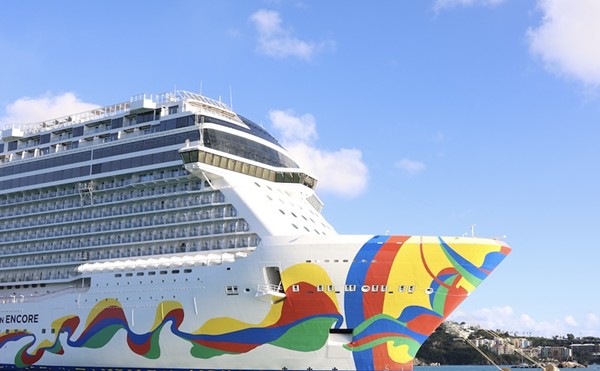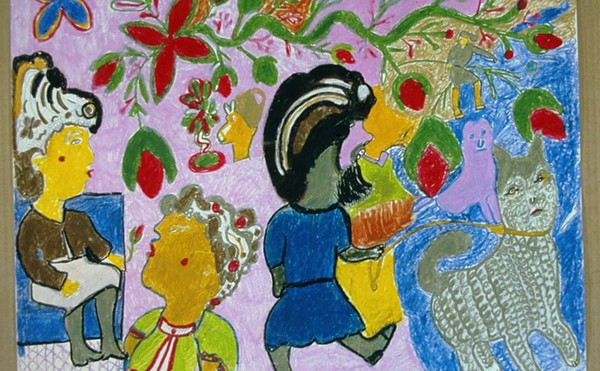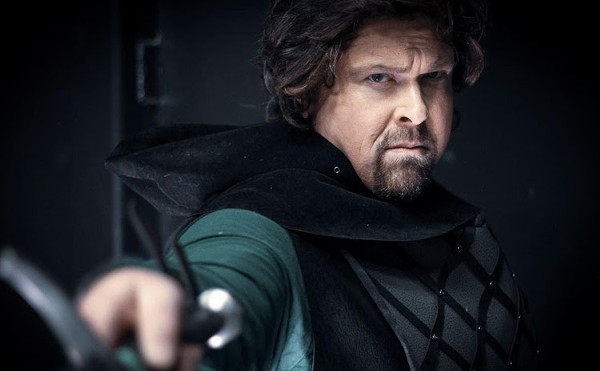Our lives would make more sense and be less of a struggle, mused the poet John Berryman, "If there were a middle ground between things and the soul/ or if the sky resembled more the sea." This desire to have the outside world coincide with our inner life -- and to get a grip on the natural world -- propels photographers Jerry N. Uelsmann and Arno Rafael Minkkinen, whose black-and-white prints make up the "Earth-Water-Man-Woman" exhibit at Crealdé School of Art.
While very different in technique and mood, the two artists overlap in many of their motifs and concerns, thereby showing how similar elements can be used to create wildly divergent results. Both tend to place the nude human figure against stately landscapes. Both seem obsessed with the shimmering and unknown qualities of oceans and lakes. And both find that humans, although at home in the natural world, can also appear desperately (or deliberately) cut off from it.
Uelsmann's photos are exercises in manipulation: He takes several images and blends them to create surreal juxtapositions. A woman hovers at the horizon line between water and sky; a woman's torso dissolves into a mountain lake; windows and doors appear to have been built into kudzu-wrapped trees. The substantial technical achievement here makes you take a step closer, and indeed Uelsmann has pulled off these blendings without any abrupt edges or texture changes.
The effect is dreamy and symbolic. After all, when a photo includes mysterious footprints along the edge or a shadowed figure with wings, you're automatically going to wonder what it could mean. The "what's he getting at?" aura is boosted by the people's expressions: A woman presses her hands to her eyes, seemingly overwhelmed or in despair; the mountain-lake woman looks on the verge of deep, peaceful sleep.
Uelsmann's work is appealing and impressive but a little too deliberately enigmatic. When you take a boulder and superimpose a gate leading into a dark passage, the metaphor is very obvious (nature as portal) while at the same time fuzzy in a new age kind of way (a doorway to what?). And why must we get through nature, anyway?
In contrast, Minkkinen captures obviously posed shots of the naked form (usually himself) in front of or becoming part of a landscape, but the mood is playful and relaxed. He puts himself in odd situations -- like horizontally between two trees -- or frames the shot so that just one section of his body is visible, making the image simple and abstract. The effect can be serene or cause you to chuckle -- but it's an effortless effect, despite the staging, because Minkkinen seems to be just exploring our at-homeness in nature, lightly bouncing the idea, not pushing hard at it the way Uelsmann does.
Some viewers might be more intrigued than I am by Uelsmann's overwrought symbolism; after all, there are people in the world who liked "Eyes Wide Shut." Regardless, "Earth-Water-Man-Woman" is intriguing because it makes you try to put your finger on certain elusive qualities -- emotion, attitude, joy -- that can come across even in the relatively mechanical art of photography. In other words, there's an awful lot you can do with a person and a lake.

















